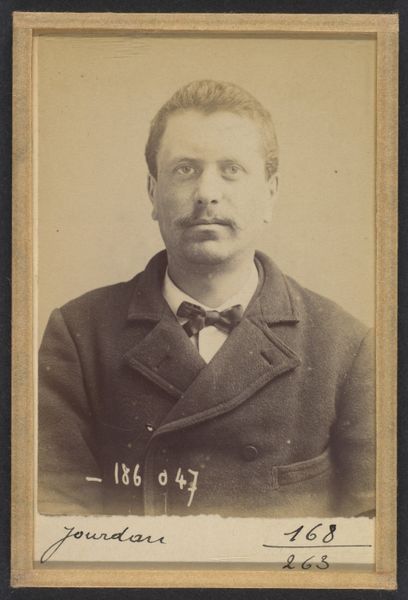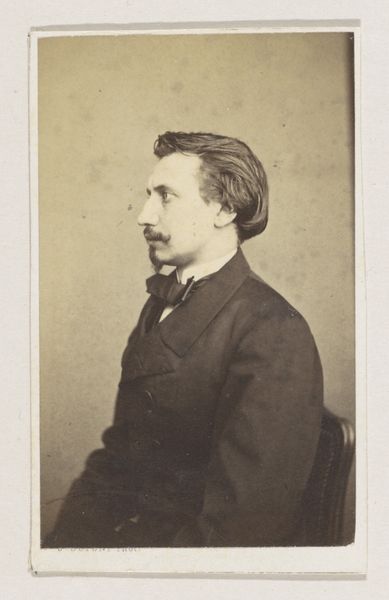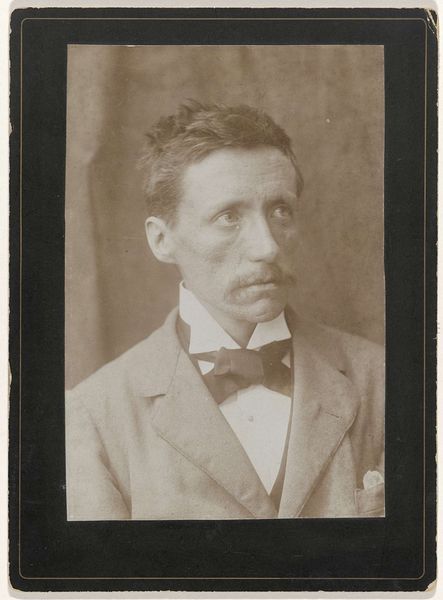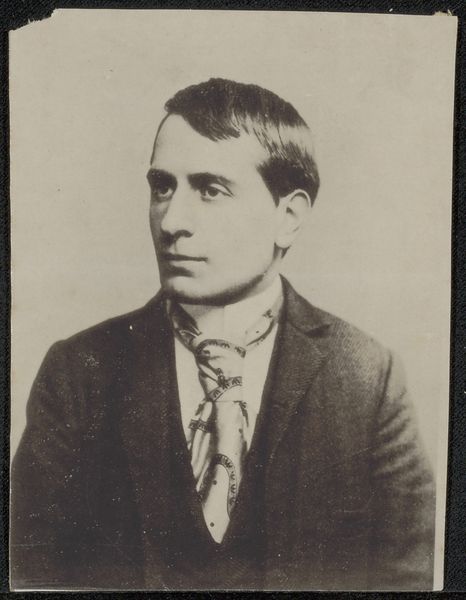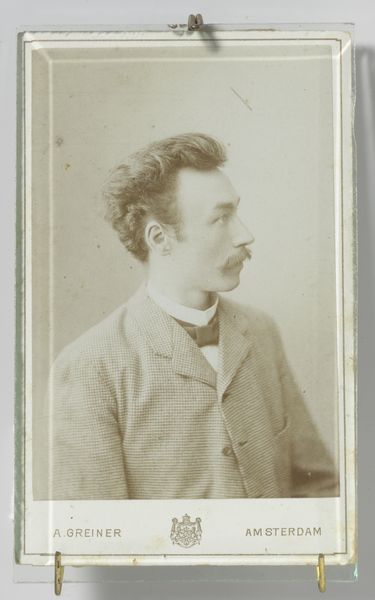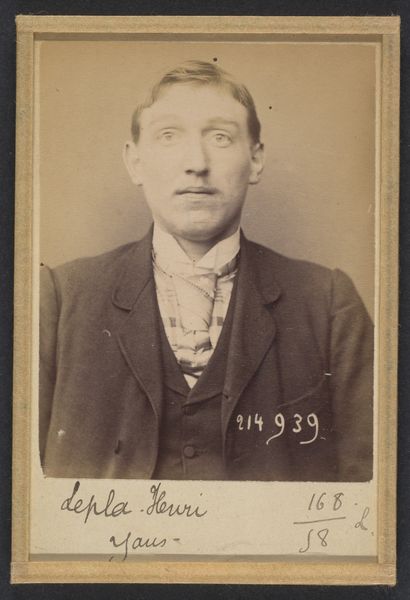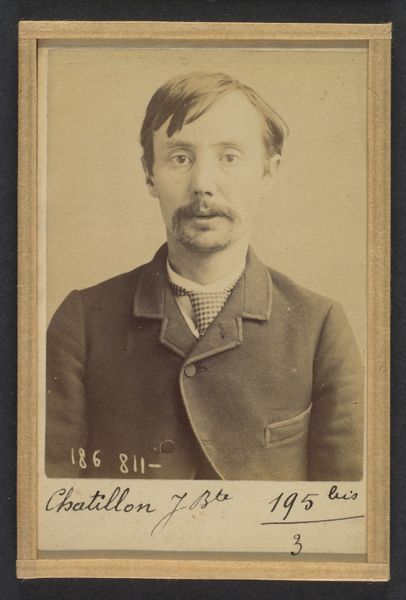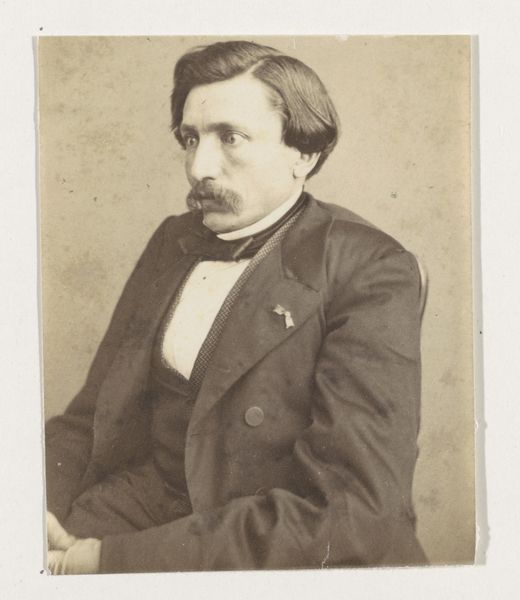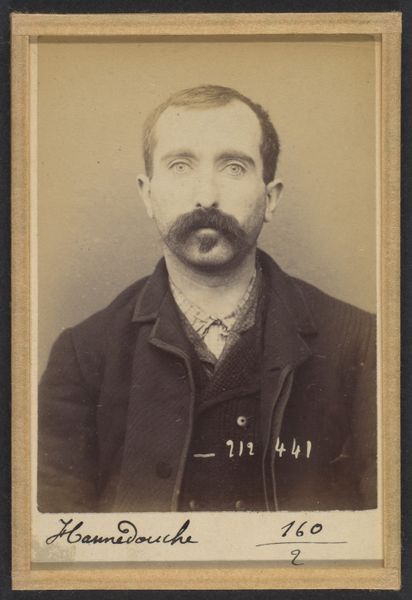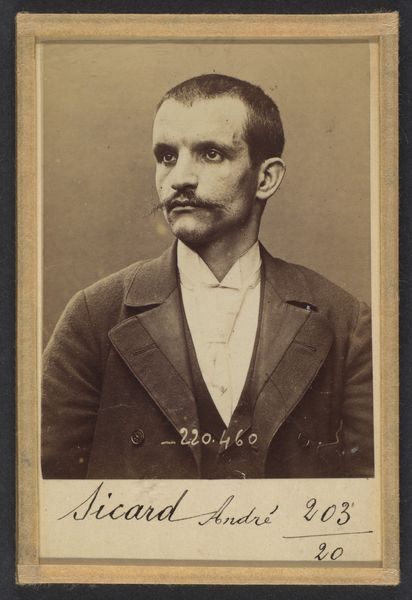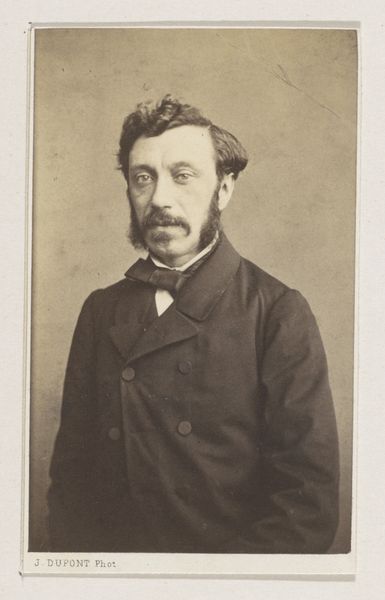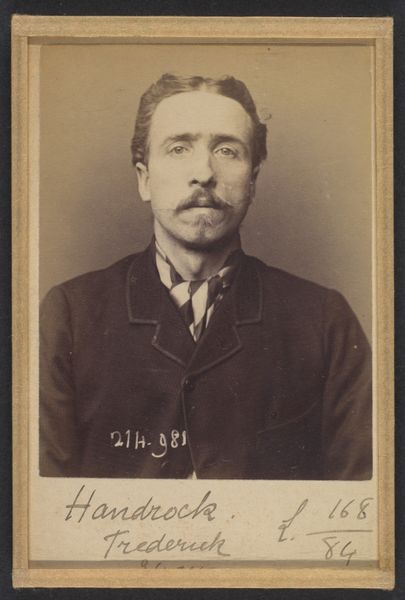![[Self-Portrait] by Thomas Eakins](/_next/image?url=https%3A%2F%2Fd2w8kbdekdi1gv.cloudfront.net%2FeyJidWNrZXQiOiAiYXJ0ZXJhLWltYWdlcy1idWNrZXQiLCAia2V5IjogImFydHdvcmtzL2Q5ZjdiYjYwLTU3NGUtNDNmZS04NDExLTkzMGY4YTlmOGRiNi9kOWY3YmI2MC01NzRlLTQzZmUtODQxMS05MzBmOGE5ZjhkYjZfZnVsbC5qcGciLCAiZWRpdHMiOiB7InJlc2l6ZSI6IHsid2lkdGgiOiAxOTIwLCAiaGVpZ2h0IjogMTkyMCwgImZpdCI6ICJpbnNpZGUifX19&w=3840&q=75)
photography, gelatin-silver-print
#
portrait
#
charcoal drawing
#
photography
#
pencil drawing
#
gelatin-silver-print
#
history-painting
#
realism
Dimensions: Image: 15.7 x 10 cm (6 3/16 x 3 15/16 in.)
Copyright: Public Domain
Curator: This gelatin silver print captures the likeness of Thomas Eakins in his "Self-Portrait," believed to have been taken between 1878 and 1882. It's currently held at the Metropolitan Museum of Art. Editor: It's an intense gaze, isn't it? The monochrome and the slightly aged texture only amplify the serious, almost brooding atmosphere. I wonder what was going through his mind. Curator: The photographic self-portrait was something Eakins returned to repeatedly, and always with a critical eye, mirroring his approach to realism in painting. He wasn't interested in flattering conventions. Instead, he wanted to honestly present himself as he was. This aligns with his pedagogical views, too, right? Art shouldn’t shy from the truth. Editor: Absolutely, it’s that rawness, that vulnerability even, that pulls me in. No posing, no fake smiles, just him. It feels remarkably contemporary in its starkness. And, it begs the question: how much are we projecting our own modern expectations onto a man over a century removed? Curator: Good question. The public role of artists like Eakins, and his later controversies over the use of nude models in instruction, complicated the perception of his work, particularly his self-portraits, positioning him as a figure fighting for artistic freedom against societal constraints. Editor: A rebel with a camera. I like that. He almost looks like he expects a challenge, perhaps eager to defend his artistic choices, but there’s also a weariness. A certain vulnerability, like he's battling his own demons. It's a study in contradictions, really. Curator: That nuanced tension you describe highlights the complex dialogue between the artist, his practice, and the socio-political context that informed the production and reception of his images. He lived and worked in times of strong change, that defined the world we now share, with photography evolving from artistic novelty into scientific truth. Editor: So, in the end, it’s less about him telling us who he is and more about us confronting our own perspectives, informed by time and experience, as we look back at this historical figure, right? Curator: Precisely. These visual artifacts exist both in their time and in ours, inviting an ongoing conversation about art, identity, and history. Editor: Yes, art is really always about an unfolding dialogue and I appreciate his courage, no matter his intentions, to open this space, it also really pushes me.
Comments
No comments
Be the first to comment and join the conversation on the ultimate creative platform.
